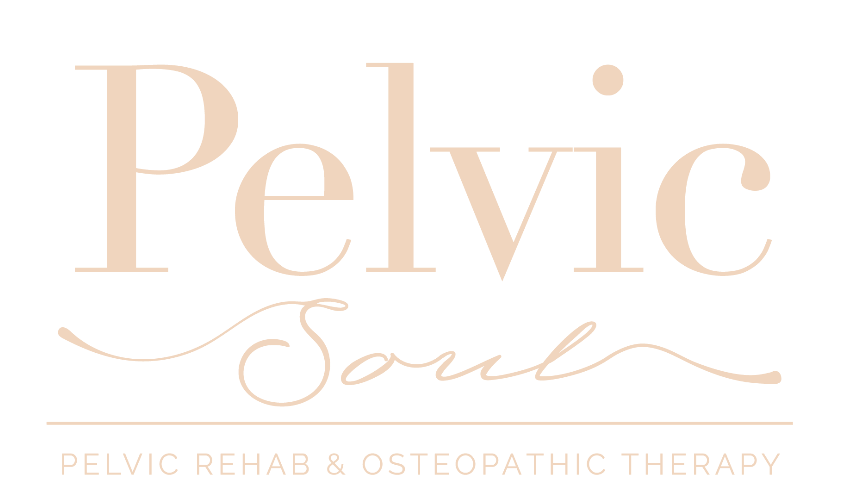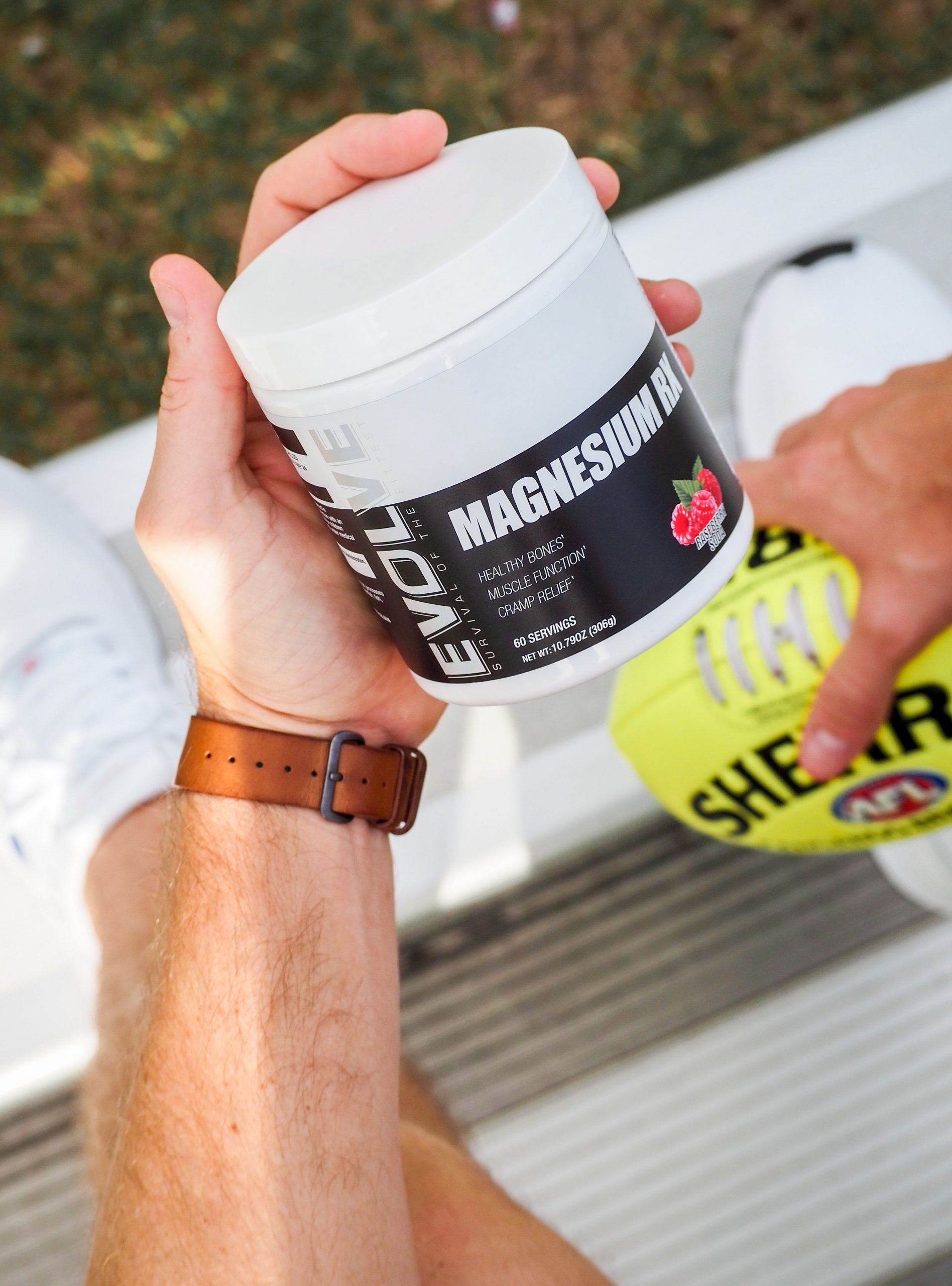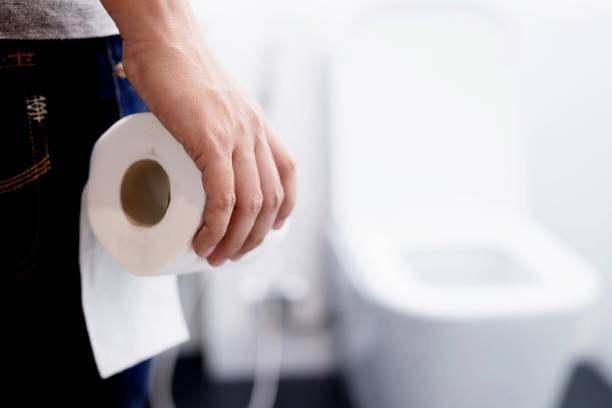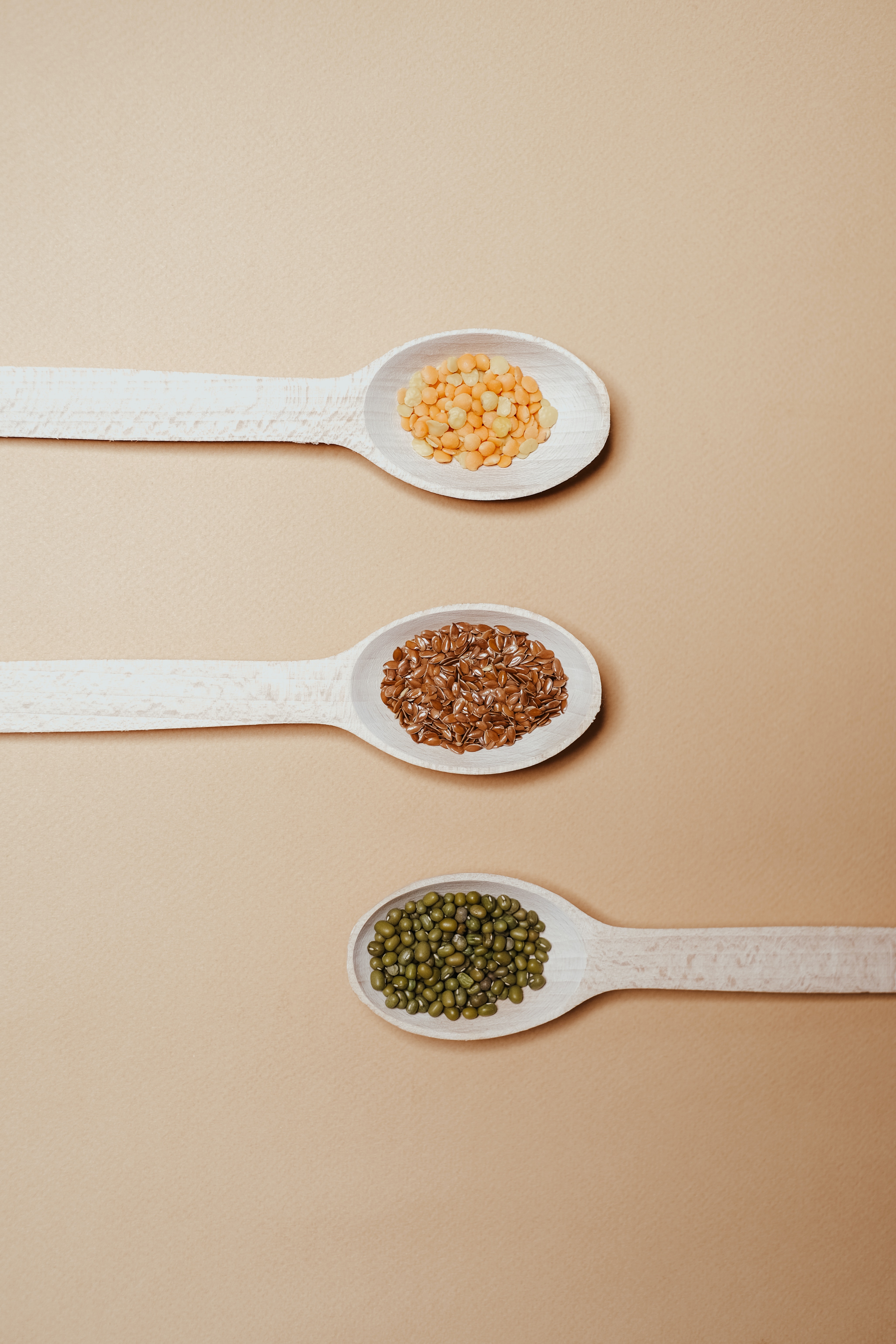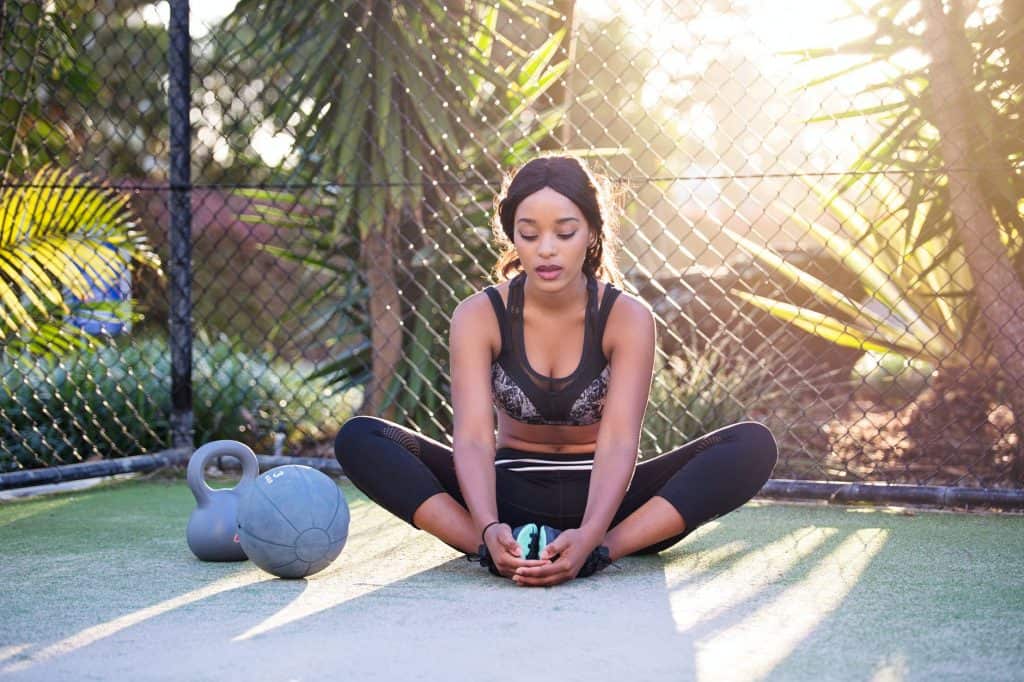
Add these stretches to your workouts to decrease soreness and optimize sport performance.
Athletes and high intensity exercise enthusiasts are at a greater risk of injuring themselves, or developing pelvic floor dysfunction due to the repetitive and forceful movements they often engage in. Most fitness enthusiasts prefer one style of workout (running, weightlifting, cross fit etc), and do not spend as much time stretching as they should. What results is a pattern of certain muscle groups being tighter and shorter than ideal. Read on to learn 5 quick stretches you can use right after your workout, or periodically through the day to increase flexibility in your hips, low back, and pelvic floor.
Our pelvic floor therapist works with fitness enthusiasts in Tampa Bay and globally to decrease pain, improve sport performance, and decrease future risk of injury. You can schedule a pelvic health consult to meet your fitness goals, by clicking here.
The stretches below are also great for those who spend long hours sitting at a desk or driving long durations for work. While flexibility exercises may seem “too easy”, they can have the following valuable benefits –
~ Maximize strength & lifting ability, by maintaining optimal muscle length
~ Decrease pain and impingement syndromes common in athletes such as groin pain, deep pelvic pain, tailbone pain, one-sided hip pain, sciatic pain, and chronic low back pain
~ Improve sexual performance and pleasure by allowing for greater contraction & relaxation of the pelvic floor muscles during intercourse, ejaculation, and orgasm.
So if you like to run, lift, or do crossfit, you definitely want to include these stretches in your stretching routine.
Always remember to respect your body, and only stretch to comfort. The “no pain-no gain” philosophy doesn’t apply to stretching, as it can do more harm than good.
Stretch #1 – Deep breathing for Pelvic Floor Flexibility (Level – All levels)
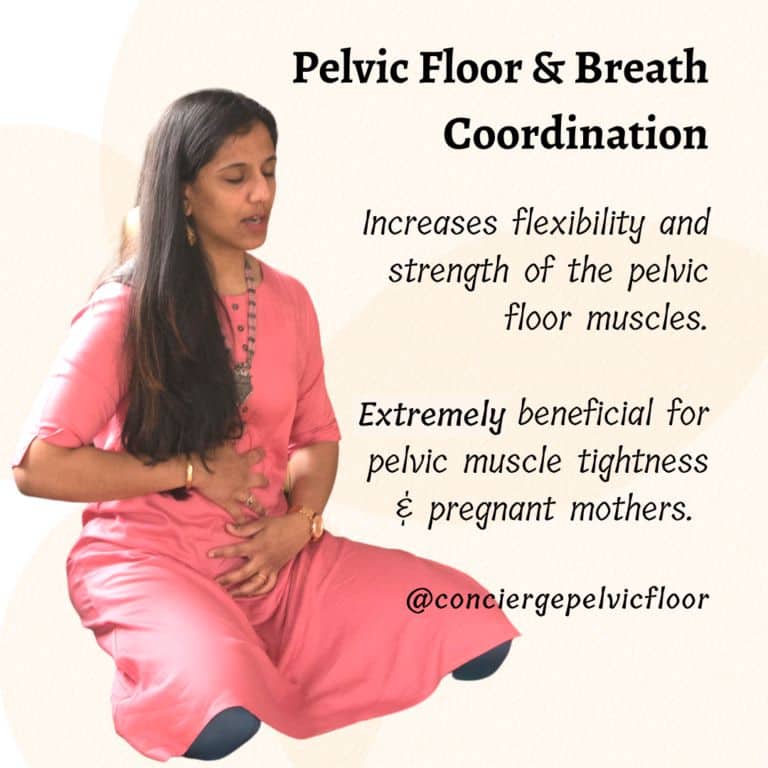
This exercise seems really easy, but is often the toughest for athletes who love lower body workouts, aka, have very toned or strong hips. More often than not, such athletes and fitness fans, have tight pelvic floor muscles.
Deep breathing for Pelvic Floor Flexibility can be done in any position, but kneeling or all fours is recommended to get a better feeling of the up & down motion of the pelvic muscles with the in & out breath.
Method – Find a quiet place, where you can close your eyes, and focus on your breath. It helps to place a hand on the lower abdomen (right over the pubic bone) to feel the breath & pelvic floor move in coordination.
Take a deep long inhale, and visualize that breath moving down into your belly and relaxing your abdomen outwards. As your abdomen relaxes out, you will consciously relax your pelvic floor down & out as well (visualize letting out gas, or watch the video below for more ideas). Hold the breath for 1 second, and then bring your pelvic floor up & in as you draw your abdomen closer to your spine & breath out.
Once you master this technique, it can be used with any of the below poses to get a better stretch for your pelvic floor.
Stretch #2 – Malasana or Deep Squat (Level – Intermediate)
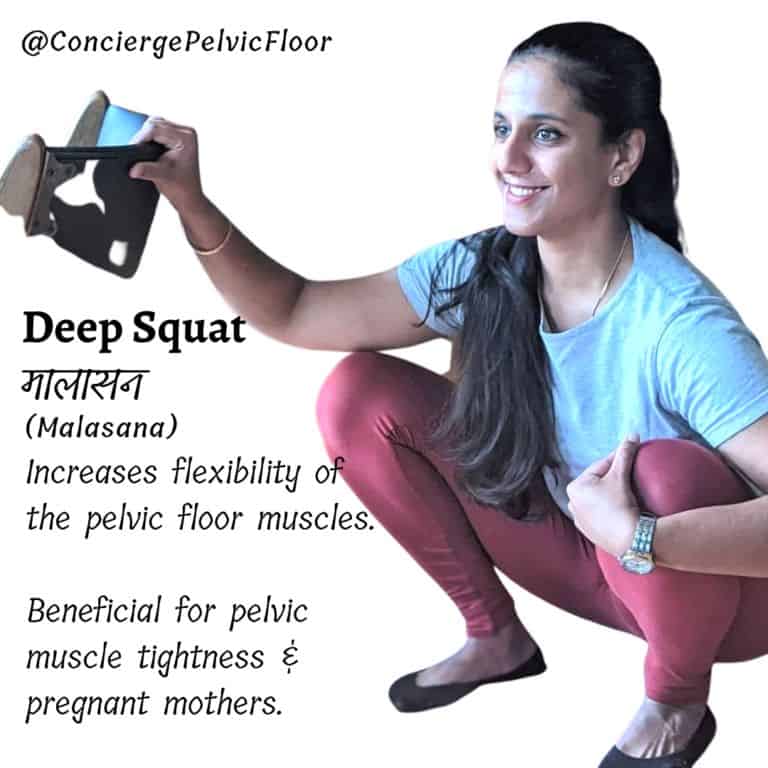
This is a tricky stretch, originating in Yoga (called Malasana or Garland pose), which is incredible for stretching the muscles around the tailbone and lower back. It can also be extremely difficult to achieve for those who are not used to squatting to the floor.
If you’re a beginner to this pose, keep a towel or rolled up yoga mat handy to place under your heels, so that most of your weight is support on the ball of your feet (forefoot). You can also start by using a support to steady yourself, as shown in the picture or starting with your back to the wall for additional support.
Method – Use support if necessary, and slowly lower yourself to a comfortable position. Note that you shouldn’t be leaning forward – your rib cage shouldn’t be parallel to the floor. Instead, aim to keep your ribs stacked over your hips as much as possible. This yoga pose can be extremely difficult for beginners, so be graceful to yourself as use support, and only hold for 10 -15 second initially. Slowly work on increasing the duration of the pose, and decrease the level of support used.
Stretch #3 – Seated Twist (Level – All levels)

This stretch is a crowd favorite as it targets multiple areas of the body. In addition to stretching the outer hips, the seated twist increases flexibility throughout the spine, and lengthens the hamstrings.
Method – Start sitting comfortably with both legs extended in front of you. Grab one foot, and lay it outside your opposite knee. If this is too difficult, just bend the knee, to place the foot beside the other knee. Gently twist towards the bent knee, while consciously releasing tension in your back muscles. Breathe into your ribs on the “open” side, feeling the lower ribs move as you inhale deeply. Hold for a few breaths, and then twist to the opposite side.
As you gain proficiency, aim for a deeper twist, and bringing your raised knee closer to your chest.
Stretch #4 – Child’s Pose (Level – All levels)
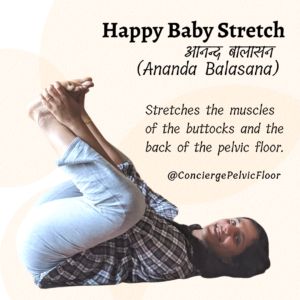
A crowd-pleaser, Happy Baby pose can be easily fit into your day whenever you need a low back and pelvic floor release.
Method – Lay comfortably, and if able, grab your feet on the outside edge. You can modify by using a yoga strap or stretching band if you’re unable to reach your feet. The goal is to maintain a straight spine, while bringing your knees as close to your chest as possible.
For those with tight pelvic floor muscles, the tailbone & sacrum will tend to lift off the floor when doing this stretch. If that’s the case, move your knees farther from your chest but keep the tailbone as close to the ground as possible.
This pose is wonderful for adding in pelvic floor relaxation using breath (Stretch 1).
You can also get added benefit from keeping one leg straight to the ground, and only raising the other leg up – for “half” Happy Baby.
Stretch #5 – Butterfly Groin Stretch (Level – Beginner- Intermediate levels)
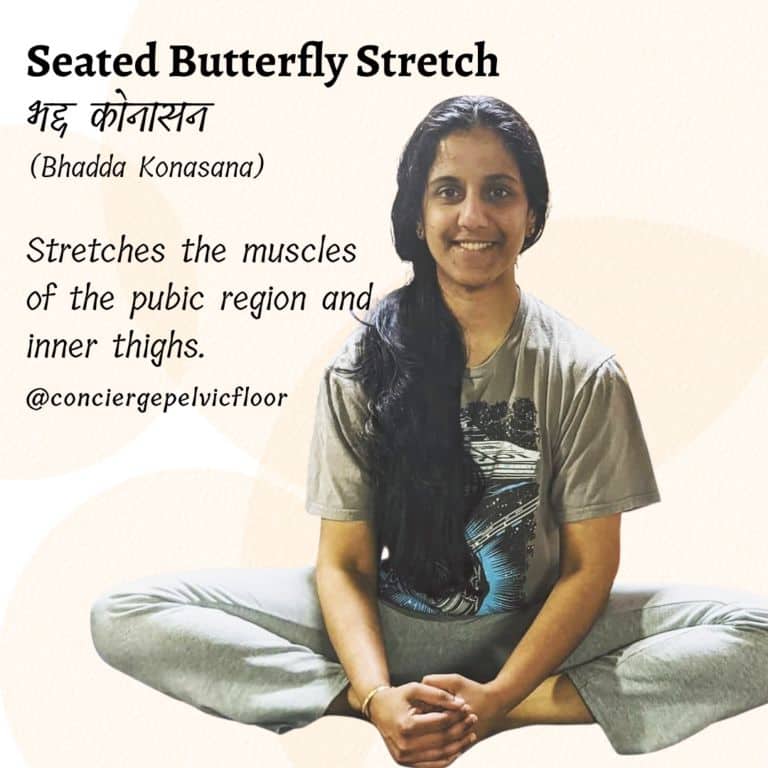
The picture depicts a smiling yoga practitioner with no hip tightness (aka me!). Please don’t aim for your knees to be as low to the ground as the picture. Men who innately have less flexibility than women, will find this level of hip flexibility hard to achieve.
Start where you are today, and slowly work on letting go off hip and pelvic floor tension, by allowing your knees to lower to the ground with practice.
Method – Sit comfortably on the ground with both feet out in front of you. Draw in one foot towards the center, and then the other so that the feet are connected to each other. You can hold your feet together as shown in the image, and place pillows or yoga blocks under your knees to make this stretch more comfortable.
Avoid rounding of your spine & drawing in of the tailbone. Aim to keep an elongated spine, and a tailbone that is pulled out from under you. As you progress, you can use gentle pressure through the knees to increase flexibility, but remember – if there’s pain, lessen the stretch!
We hope these stretches are helpful as you become more efficient in the gym, and are less sore on your recovery days. If these stretches do not resolve any lasting tension in your groin or buttocks, reach out for a consult with our pelvic floor specialist! We have helped countless athletes get back to the sports they love stronger & pain-free
